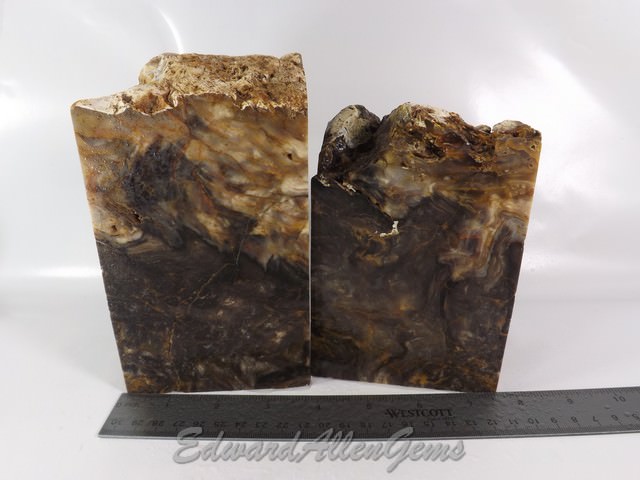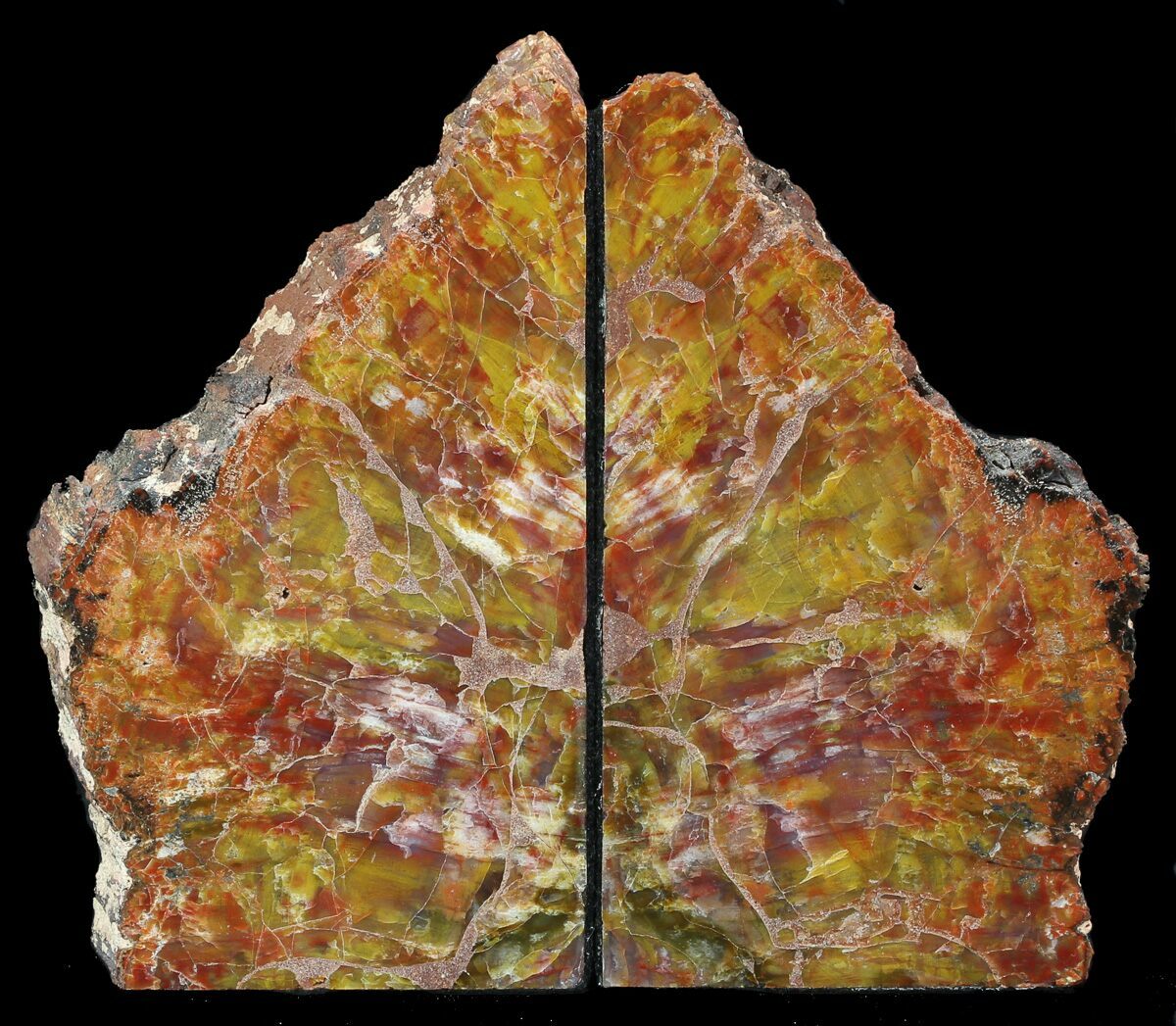

Petrified wood from Zimbabwe is world-famous for its rare, green coloring due to chromium content in the groundwater while the wood petrified. Supremely beautiful specimens have come out of Madagascar, Indonesia, and Australia. Oregon is another state with highly chromatic wood that features striking patterns and shapes. Here, the wood displays a rainbow of colors a kaleidoscopic swirl of blue, yellow, red, pink, and white. Perhaps the most famous of these is the forest in Arizona. Within the United States, there are a few national and state parks dedicated to petrified forests (Texas, Arizona, Washington, Wyoming, and New York). FossilEra your source to quality fossil specimens. Petrified wood is found worldwide, however there are some locations that have more abundant amounts or more colorful varieties of these fossils. 7.8' Tall, Arizona Petrified Wood Bookends - Red & Black (Item 195140), Petrified Wood Bookends for sale. It is important to remember that this process takes thousands of years to completely replace the vegetation and during this time the climate will undergo many shifts, so for impeccable preservation to occur, very specific conditions are necessary.

A significant portion of petrified wood is believed to have formed from ash covering forests after major volcanic activity. What you are left with is a non-carbon-copy of the tree made of rock instead of organic matter. Given the rigidity of plant cell walls, these structures act as a blueprint for the replacement to take the exact shape of the preexisting material. If conditions allow, groundwaters rich in silica, calcite, and other minerals, will seep through the buried tree and replace the organic material with inorganic material. This lack of oxygen protects the structure of the tree from rotting and decaying.

#Arizona petrified wood bookends free#
If that covering happens quick enough and complete enough, it will create an environment around the tree that is free from oxygen. This occurs when a tree falls and is covered by sediment. Petrification of wood can happen in a few ways, but the most common process is by way of silicification. This color is dependent on the location and age of the wood, but all specimens are truly astonishing to behold. Depending on the minerals present in groundwater during the fossilization process, petrified wood can be a variety of different colors from deep blacks to reds, yellows, pinks, blues, whites, and even green. Most of the petrified wood circulating on the market is the remains of tree trunks. This term is applicable to any form of fossilized vegetation, typically trunks or stems of larger plants. Araucarioxylon arizonicum is estimated to have grown more than 150 feet high and dominated the tropical forests in what is now Arizona nearly 225 million years ago.First and foremost, petrified wood is actually a fossil. Araucarioxylon arizonicum is estimated to have grown more than 150 feet high and dominated the tropical forests in what is now Arizona nearly 225 million years ago. The reds and oranges come from hematite inclusions within the silica, the yellows from limonite and the purples from magnesium based minerals. The petrified wood of this tree is frequently referred to as "Rainbow wood" because of the large variety of colors some specimens exhibit. The petrified wood from the extinct conifer Araucarioxylon arizonicum which happens to be the state fossil of Arizona. The petrified forest encompasses nearly 100k acres and this wood comes from land outside of the park. This is similar to petrified wood which is found in the Petrified Forest National Park.

For example pinks and reds are due to hematite, a form of oxidized iron. The vibrant coloration is due to the contaminating minerals in the silica which replaced the original wood structure.


 0 kommentar(er)
0 kommentar(er)
